| T O P I C R E V I E W |
| Vlad |
Posted - Dec 23 2016 : 11:33:29 AM
Seasons greetings from Dr. Milos Mladek in Austria with these photos of unique MIR-20N prototype with 2(!!) diaphragms!
quote:
I consider the lens a true research model, but on the other hand I suspect that the engraving is not original. Too emphatic for a true factory prototype. I also thought about the production date, wether the diaphragm lens is really from 1977 – Carl Zeiss Oberkochen delivered a multicoating machine to Russia, I am sure about that, but I cannot remember the date. There was a story about that in „Fotomagazin“, the best photographic magazine in Germany in the 1960s – 90s. As far as I remember the article must have been in the 1970s or 1980s. They sold the whole machine for multicoating. I have just checked the fotoprints that I once made of the most interesting articles that appeared in Fotomagazin, but without a result. Anyway, it must have been around the late 1970s, I would say. So, if I remember right, there was a possibility for at least one of the big optical firms in the Soviet Union (KMZ? Arsenal?) to deliver multicoated lenses from at least the end of the 1970s. I will try to contact specialists in Russia and the Ukraine about that, perhaps they can tell me details about the multicoating device from Zeiss West.
First I considered the lens a total fake, as I saw it in the Leicashop, the „OBRASYETS“ seemed to exaggerated to me, until the moment when I had realized the two internal diaphragms – from that millisecond it was clear that this could not be a fake (save the engraving, which still seems a little doubtful to me) and I had to have it. I tried the lens on my EOS (with an Adapter Nikon – Canon EOS), with the usual brilliant results – the MIR-20 is first class.
If you position the lens in such a way that the sun beams fall directly into the lens, but the sun does not yet show in the finder image, these rays (that otherwise are reflected several times in the interior and so in a normal lens contribute to flare in the image) are blocked by the two internal diaphragms, which should result in a better overall image quality. When I tried that out I really had the impression that the whole thing works, yet the effect was not a big one, but definitely visible (I fixed the camera on a tripod and made subsequent shots with the two MIR-20, the one with and the other without diaphragm). I will try the whole thing out again in summer with my Sony alpha 7R (which is an ideal camera for testing virtually all lenses that exist on earth on a full frame body).
The only other lens that I know that has such an internal diaphragm (one, not two as the MIR-20 has) is the Canon EF 1,8/28mm, introduced in 1995 (which means it very probably appeared after the „Obrasyets“ – should Canon have copied a MIR-20? I do not believe that, but strictly seen it is not impossible) . I nearly bought it for that reason, but after all did not, too expensive even second-hand. But I have just checked the book „EF Lens Work III“ by Canon, and it says about the EF 1,8/28 the following: „A flare-cut diaphragm installed behind group 1 blocks unwanted light to ensure highest contrast“, and that obviously was the aim of the two diaphragms in the MIR-20 as well. By the way: the two diaphragms are not identical: the anterior one has a rectangular cut-out and bulges (it is cut out from a spherically formed part), while the rear diaphagm has a pin-cushion cut-out and it flat! Unbelievable, in my eyes.
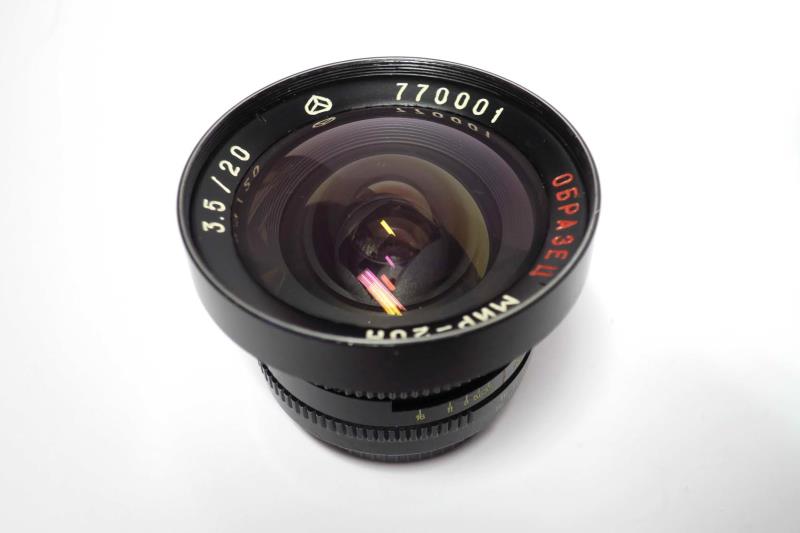
http://www.ussrphoto.com/UserContent/23122016_mir-20h-6.jpg
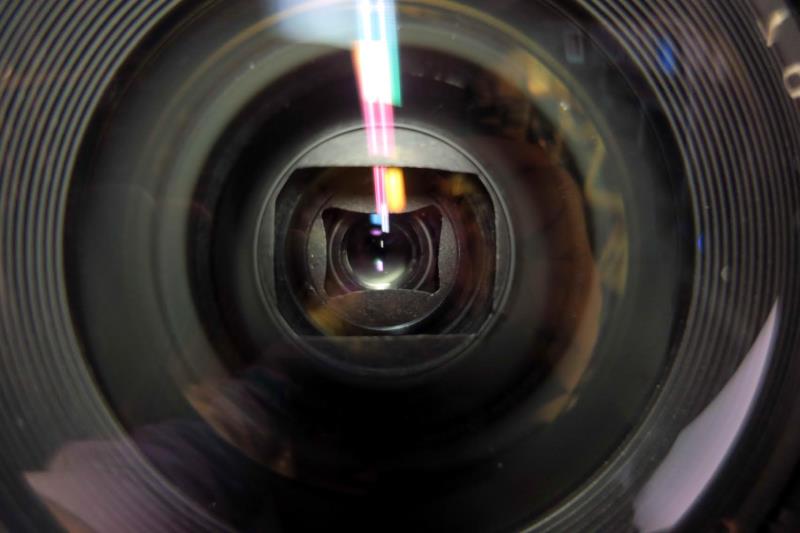
http://www.ussrphoto.com/UserContent/23122016_mir-20h-5.jpg
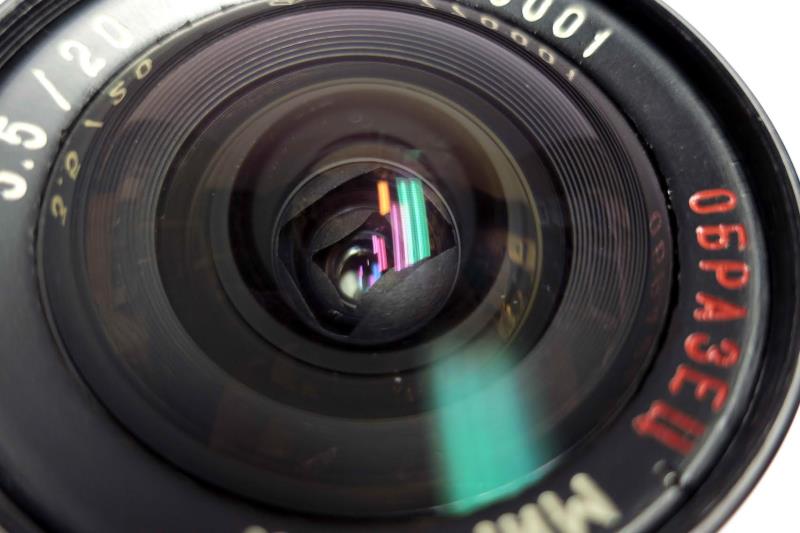
http://www.ussrphoto.com/UserContent/23122016_mir-20h-4.jpg
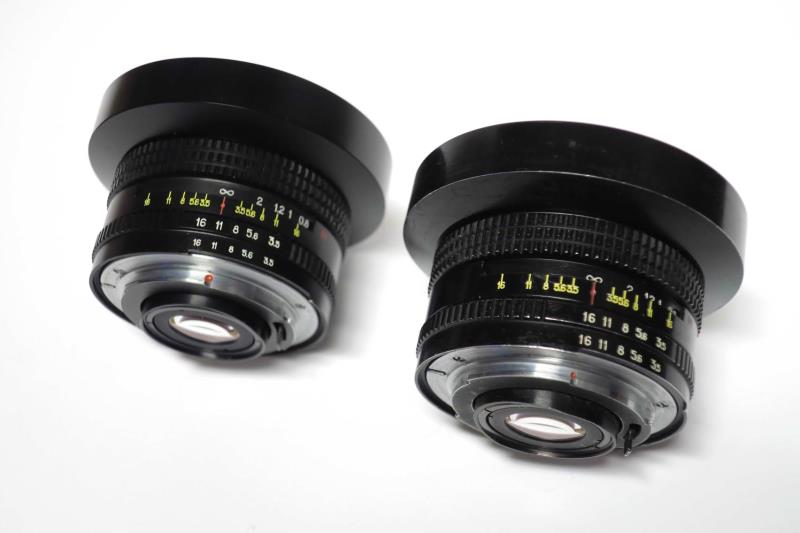
http://www.ussrphoto.com/UserContent/23122016_mir-20h-3.jpg
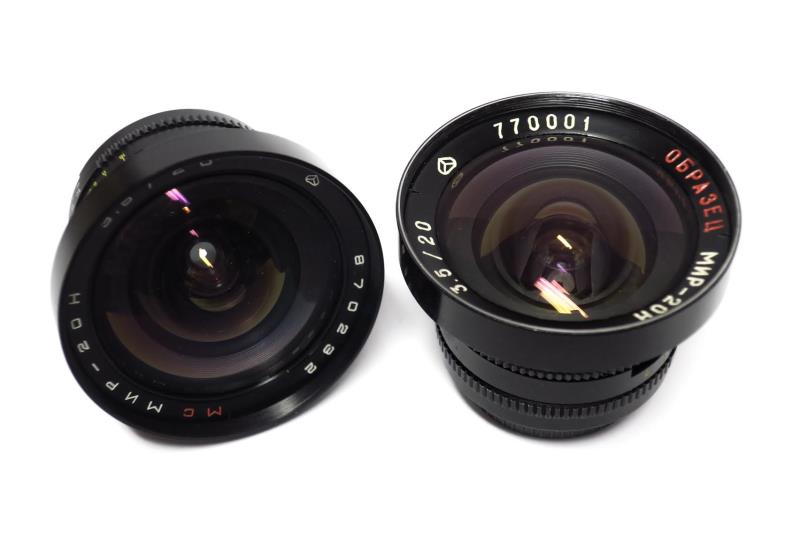
http://www.ussrphoto.com/UserContent/23122016_mir20h-2.jpg
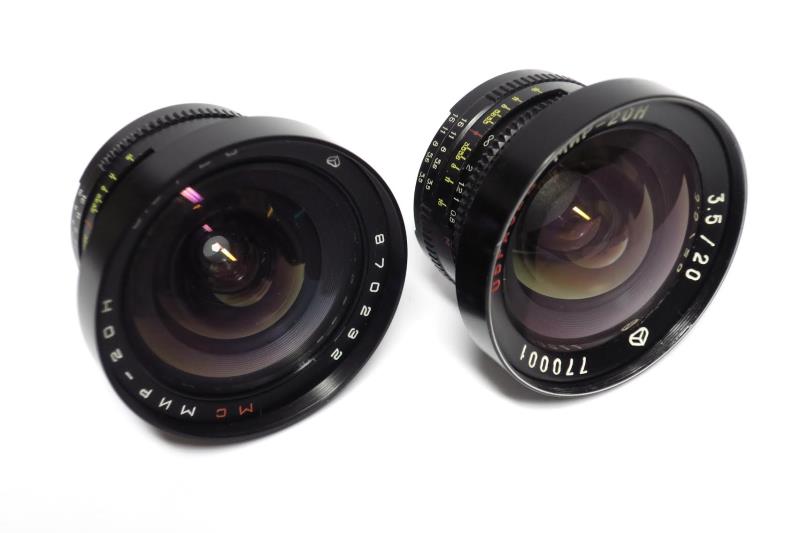
http://www.ussrphoto.com/UserContent/23122016_mir20h-1.jpg
|
| 3 L A T E S T R E P L I E S (Newest First) |
| Luiz Paracampo |
Posted - Dec 28 2016 : 12:40:22 PM
Very interesting lens. The strange diaphragm has not of new, althoug they are uncommon. the pin cushin diaphragm is made towards better over-all light distribution to the frame edges. It Works well on Bayonet mounts which have proper position mount and less tolerance to the azimuth positions.
This is not the case on screw threaded mounts where allowances are greater.
I surely believe this lens and the engravings are not fake.
Otherwise I suggest to consult Marco Cavina which is the greater optical wise enthusiast that I know. Certainly he will contact the Arsenal survivor's men.
Best regards. |
| Zoom |
Posted - Dec 23 2016 : 3:09:38 PM
quote:
Originally posted by Milos Mladek
I will try to contact specialists in Russia and the Ukraine about that, perhaps they can tell me details about the multicoating device from Zeiss West.
Very interesting who are they, and what they will tell. |
| Moxies |
Posted - Dec 23 2016 : 12:00:25 PM
What a great find! Thanks to Dr. Milos Mladek for sharing this! |
|
|
